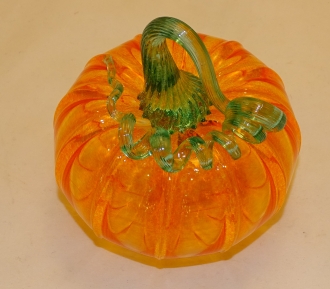Murano Glass Gifts
- All Shops
- Murano Glass Gifts
- Amazing Music Boxes
- Beer Steins
- Limoges Factory
- Gift Guide
- Walking Canes
- Gifts
Pate –de-verre – the Paste of Glass Technique
Pate-de-verre is said to be a glass art which was in practice three thousand years ago in Egypt. There are evidences that show that this technique was used in Rome and China also thousands of years ago. But then the art was lost and forgotten. This incredible art was revived in France during the Art Nouveau period by various artists. The Daum Nancy glass was the most important among them.
This is a highly complicated and time consuming artistic work. At the same time this allows slow gradation of colors and exact color placement in glass work.
The literal translation of the word ‘pate-de-verre’ is ‘paste of glass’. Glass of different colors is ground to a consistency of sugar or slightly smoother or slightly rougher. These are called ‘frits’. These frits are used with a binder called gum Arabica and made into a paste. This paste is used for creating artistic pieces.
The first step is to make models. Usually wax is used to make the models. The model is then surrounded by plaster. This is termed as investment. When the investment sets the wax is melted away to form the negative mold. This negative mold is used to make the pate-de-verre objects.
The inside of the negative mold is painted with the glass paste of suitable colors. This is called ‘stamping’. This first thin layer forms the relief. The color placement is done in the first layer, so that it will appear in the relief. Thereafter a thicker layer of any color is applied. A third layer of something like plaster is used for holding the design in place. The whole thing is placed in a kiln and fired at a high temperature. The glass powder melts and fuses to form the glass object.
When it is fused, the kiln is allowed to cool slowly to anneal the glass. If cooling is sudden, the glass may crack. After the glass is cooled it is separated from the mold and cleaned. A lot of cold work is needed to make the edges even. Then the object is ground generally to make it smooth and polished.
In France the pate-de-verre is done using another technique. The French do not use the binding agent. But the negative mold is painted lightly with an adhesive. Then the various colored glass powder is carefully sifted into the negative mold, so that the color gradation and placement is intact. Then more glass powder is spooned in to fill it. A plaster cast is used to hold the glass powder in place before placing the whole thing into the kiln.
The cold work is similar to the glass paste method. This pressed glass art is a kind of kiln casting which is extremely difficult. But once the object is finished you will find out that every bit of the hard work was worth it. That is the magical beauty of pate-de-verre objects.
by Marina Chernyak




